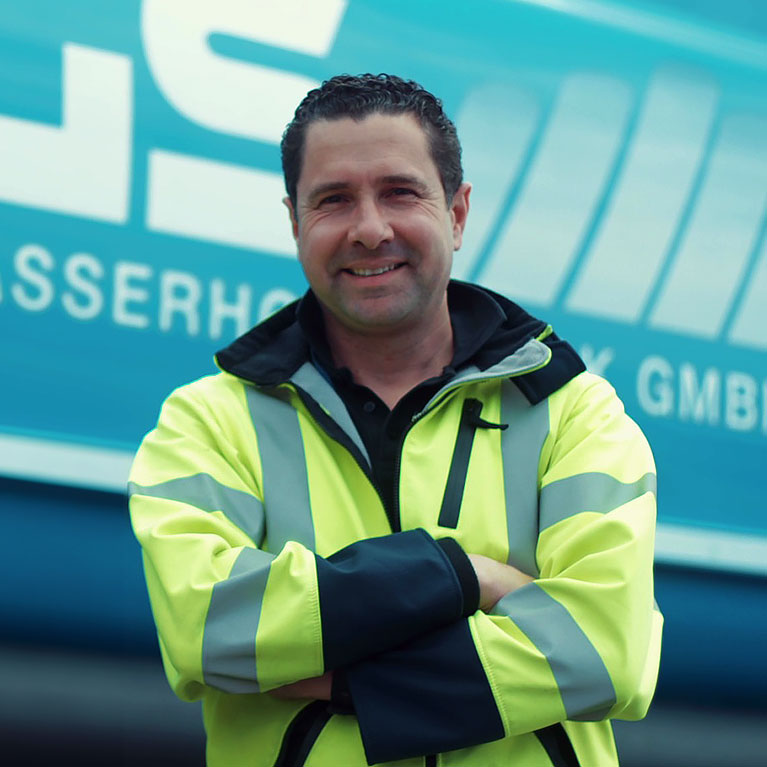Friction measurement – travelling at 95 km/h for safety
The friction measurement method is used mainly on airport runways and taxiways where the demands on surface grip are known to be particularly high. The measuring wheel is suspended mechanically from the vehicle chassis on a power transfer arm and can be raised and lowered hydraulically. In the lowered position, the wheel is pressed against the ground with a specific controlled force (between 100 and 130 kg) by the hydraulic cylinder. The chain power transfer mechanism is fully integrated in the power transfer arm.
The transmission ratio of the chain power transfer mechanism is designed such that the measuring wheel does not roll freely over the surface during the friction measurement, but slides to a certain extent. The slip this causes is about 15% with new vehicle tires and a new measuring wheel, but can vary between 13% and 17%, depending on wheel abrasion and vehicle tire wear. The sliding on the surface produces a torque in the power transfer mechanism which is recorded by the horizontal force sensor.The vertical force on the measuring wheel is recorded by the vertical force sensor.
The two friction measurements are sent to the computer, which uses the ratio of the horizontal and vertical forces acting on the measuring wheel to calculate the coefficient of friction at the point where the wheel is in contact with the ground. The measurement distance is measured by a pulse sensor on the power transfer arm.
Measuring Vehicle
Get advice now!
Are you interested in our services? We would be happy to advise you in detail and without obligation. Use our contact form - we will get back to you as soon as possible!

